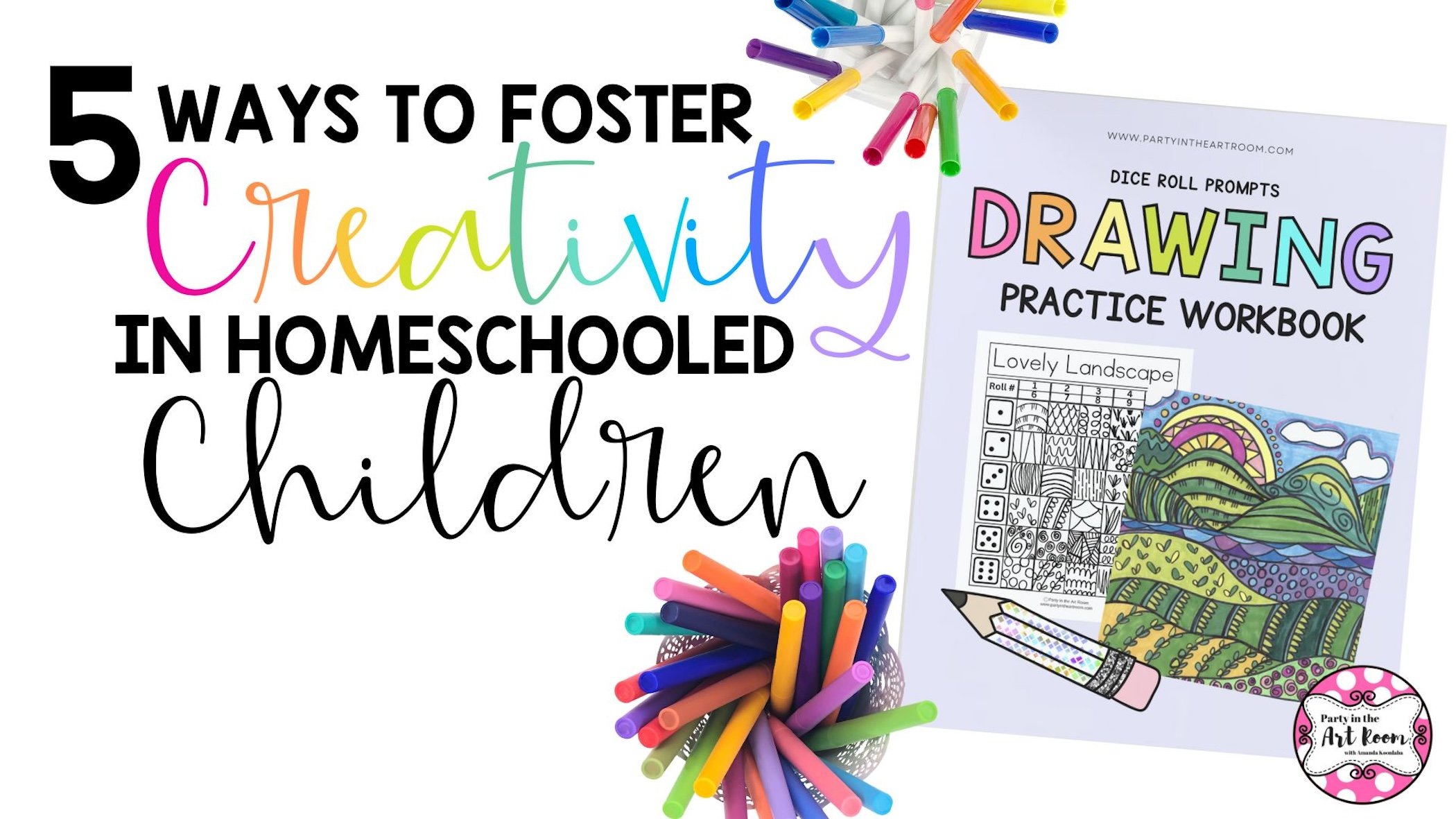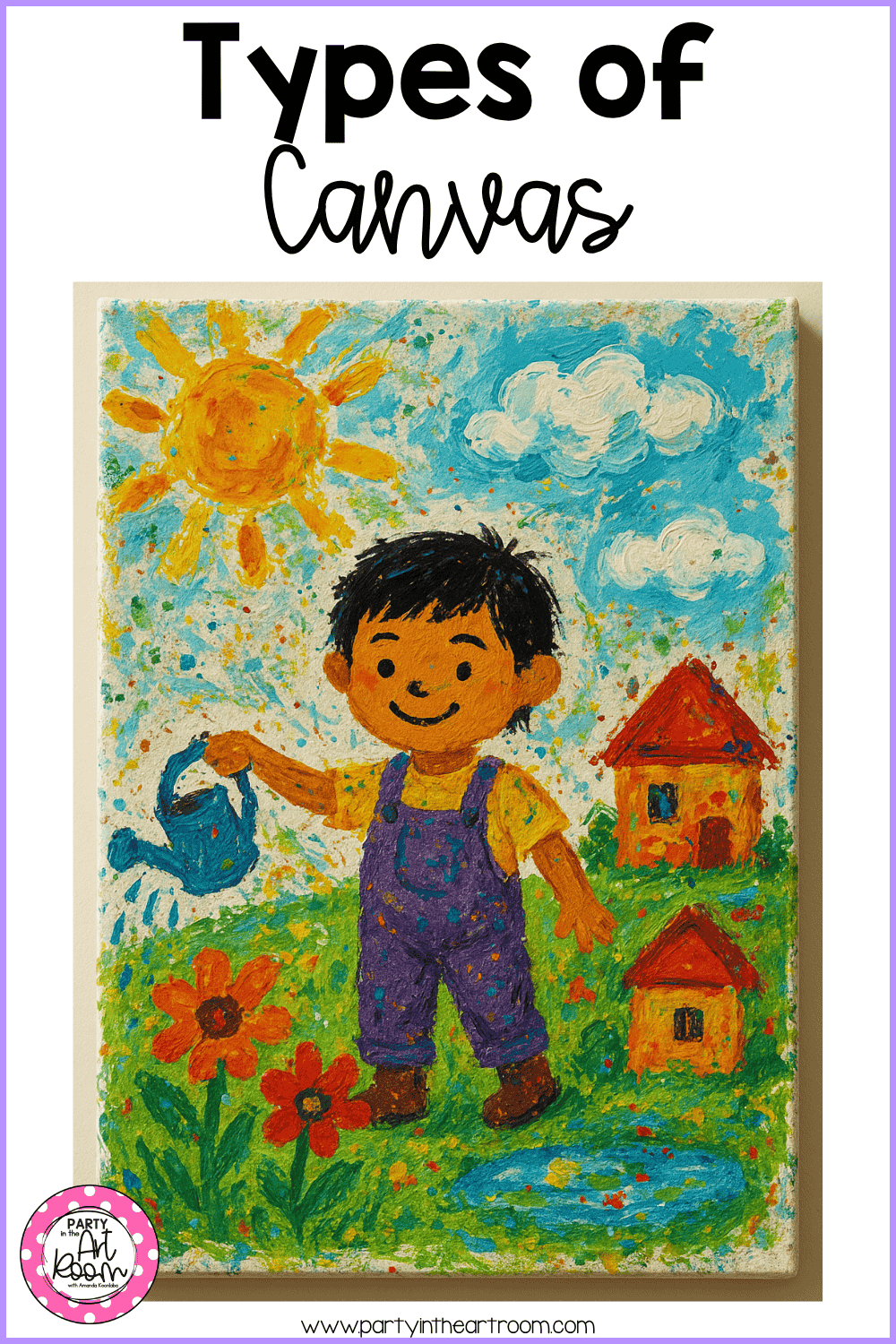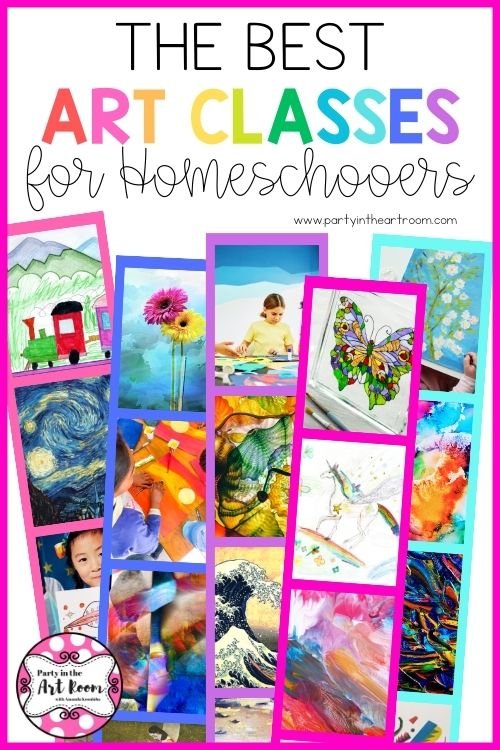5 Absolutely Awesome Ways to Foster Creativity in Homeschooled Children
For many parents, homeschool life provides the flexibility needed to focus on educational endeavors that traditional education opportunities often neglect. Homeschooling serves as an effective method for fostering creativity in the minds of their children. Without the rigid structure and limited curriculum of traditional schooling, homeschooled children have more freedom to embrace hands-on learning while actively working through the creative process.
A study from Stetson University showed that homeschooled children measure higher on a multitude of creativity scales due to their ability to work independently and pursue topics of interest. If you are considering homeschooling your child, or have already begun their journey in education, here are some ways you can help grow your child's creativity at home.
Up level your homeschool art curriculum with this Drawing Practice Workbook with Drawing Prompts.
1. Provide Hands-on Creative Practice for Homeschooled Kids
A creative homeschool life is best built by doing.
Providing your child with hands-on opportunities to practice their creativity in a guided environment will help them create the neural pathways necessary for high-level creative thinking.
Drawing Practice Workbooks that utilize dice roll prompts is a great way for children to build creative problem-solving skills. Drawing workbooks like this one help kids apply creative problem-solving to their projects while practicing the fine motor skills needed when using a drawing implement.
These workbooks allow children to practice their drawing ability under a set of guidelines. These limitations can help young people foster creativity and problem-solving skills as they work to make their art unique while practicing randomized patterns and designs. These are the perfect addition to any homeschool art curriculum.
This Drawing Practice Workbook is great for enhancing creativity in the homeschool art curriculum.
2. Make Creativity the Vehicle, Not the Destination
Creativity is often seen as a trait and not a skill or tool. When creativity is framed as the method for learning, children and parents alike will see the value of approaching learning with creativity.
Drawing Practice Workbooks for kids that focus on a variety of topics like animals, nature, and food allows homeschoolers to learn while they create.
When students see creativity as a tool for learning, they will build problem-solving skills that will last a lifetime. For many students, learning through creation will increase knowledge retention. Studies show that when young people approach learning with a hands-on method like art, they can show a mastery of the content much quicker than traditional methods.
3. Reward Creativity
Developmental psychology shows us that developing brains respond to positive reinforcement. When your child is rewarded for their creativity, they will continue to pursue creative endeavors. In addition, positive reinforcement can help build a child’s creative confidence and self-esteem.
The benefits of homeschooling become apparent when you can make space for creativity in your child’s education. Traditional schooling often lacks the freedom for creativity. Your homeschooler will flourish if you put extra emphasis on rewarding creativity.
This workbook is a great addition to any homeschool art curriculum.
4. Encourage your Student to Self-Assess their Growth
A growth mindset allows young people to focus on their progress instead of always searching for the correct answer. Creativity allows students to find their path to success. When students are conditioned to measure their progress, they will feel much more confident when taking risks and pursuing originality.
Practice Workbooks are a great way for homeschooled students to see their progress over time. As they work through the book, they will build visual evidence of their growth. Seeing this growth can help encourage students to continue to pursue creative endeavors.
5. Allow your Child to Express Themselves Freely
This letter from an NYU Student captures the feeling that most young people with a passion for creativity feel. Most young people, although passionate, lose their love for art because they are often discouraged by others or the profitability of other endeavors. When it comes to fostering creativity in homeschooled students, you must encourage your children to use their creativity to express themselves freely.
The major benefit of homeschooling is to minimize the societal influence of others, including those who may discourage creativity. When you allow students the freedom to create and pursue art, they will continue to use their creativity to build vital problem-solving skills. While providing creative opportunities, like the Children’s Drawing Workbook, can help, a child may not feel fully supported in their creativity if they are not given the freedom to express themselves how they see fit. Remind your child that there are no wrong answers when it comes to their creations as long as they are enjoying the process.
Take your homeschool life to the next level with this creative workbook.
Final Thoughts: All Parents Can Build Creativity at Home
The ability to encourage creativity is one of the reasons why homeschooling your child is appealing to many parents. When you create an environment where creativity is both accessible and valued, you will encourage your child to grow into an exceptionally creative problem solver.
And, it warrants making a note here that all parents are home educating their children at some point. Even when parents choose a more traditional route for educating their children, they still educate them at home. It’s what parents do! So, any parent can build creativity in their home for the benefit of their family!
I’m Amanda, and I align standards and integrate content to help teachers meet the needs of the Whole Child in art class! I have yet to find a standard that I couldn’t teach through art, and I want to share it all with you.
Not sure where to start with bringing art and content together? This freebie guide is packed with 25 ideas to align your art lessons with math and ELA standards. Your students will be crafting art and practicing algebraic thinking. Win-win!
I want all students to feel successful in the art room, so I created a standards-based Daffodil Collage lesson to do just that! The lesson includes an artist study, student reflection, and more, so push your artists to their full potential.
Follow along on my Instagram page for more tips on teaching the Whole Child in the art room!
Connecting art and content together doesn’t have to be mind-boggling. I’ve made it simple with 25 math and ELA art lesson starters - for free! Plus, I included 15 worksheets for students to reflect on their art-making journey.









